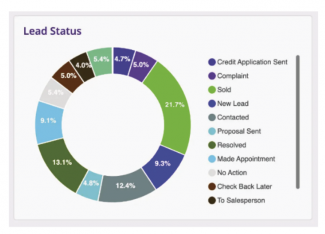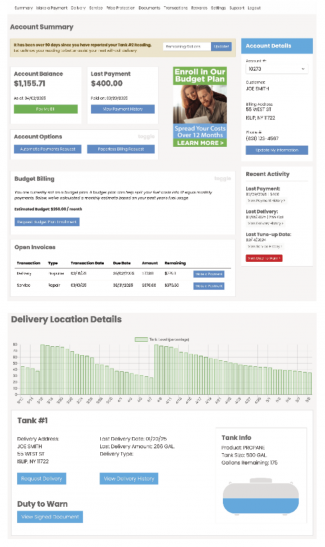All
How Intelligent Are Your Integrated Customer Platforms?
by Richard Rutigliano, PriMedia, Inc.

Are your customer platforms intelligent? Can they reduce risk in price protection plans, increase engagement and online reviews, create and distribute email and text communications? Is your invoicing platform accessing the same data as your sales system? Does it gather data from your payment gateways, or are your employees forced to spend hours manually transferring sales and service tickets into an accounts receivable system, reviewing invoices, printing, and mailing?
There are many providers of software to help your business run more efficiently. However, when you use different vendors for your account management, customer portal, lead tracking, text and email communications, and review generation, the programs may be running on parallel tracks. When these systems are not connected – whether through a common developer or through custom integrations – your operations processes are actually impeded, requiring more interaction from staff and creating duplicative reports.
Software, or Software as a Service
Many readers may remember getting AOL discs in the mail or purchasing MS-Word programs from the local electronics or office store, and uploading the software onto their hard drives. This was the best and only option for software in the early days: Individual programs that were bought and installed on individual computers.
Software as a Service (SaaS), on the other hand, is software that is licensed from the developer and then accessed remotely, over the internet, without any downloads. It makes it easier to use, requires less maintenance, and is more convenient and usually much more cost-effective. It makes it easier for the developer to offer and implement system upgrades.
In those days of yore, even complimentary Microsoft programs like Word, Excel, and Outlook were purchased and installed separately. And they operated separately.
Today, you pay a licensing fee for Microsoft Office, and the programs integrate seamlessly. You can also utilize cloud storage and document sharing services, collect digital signatures, create e-commerce platforms, or stream entertainment via free or paid subscription services.
Platform Intelligence for the Customer Lifecycle
An integrated digital platform will take you through the entire customer lifecycle from lead tracking and new customer onboarding to customer service and retention strategies such as personalized text and email communications; account reminders; bill presentment and payment; budget, service plan and price protection enrollments; loyalty programs; and more.
When you are utilizing a 360° system, many of these services are almost completely automated, requiring very little staff time or manual data entry.
Let’s take a deeper dive.
Intelligent Lead Tracking
Before the customer lifecycle begins, the home or business owner needs to become a customer. Your integrated, intelligent sales and lead tracking software should be collecting and processing these potential customers from the moment they enter your website.
If they visit for a while and then leave without submitting any forms, your programmatic advertising campaign should have collected the necessary data to deliver marketing to them over the next few weeks.
If, however, they fill out a contact form, that information will be sent as an email to the appropriate sales manager, as usual. But, with an intelligent, integrated lead tracking system, the data from the information request is automatically entered into the lead system; and can be routed not only to the sales manager, but also to the appropriate representative or salesperson to reduce the time to your first personal contact.
Leads can also be entered directly by staff – either in-house customer service reps who take the info over the phone, or sales personnel using any internet connected device. Furthermore, this intelligent platform can and should be integrated with your customer management system to pull account information for existing customers looking for new products or upgrades.
Once the lead has been entered, a number of countdown clocks are activated. Each step throughout the lead process has been given a maximum response time, and the platform will provide action alerts to sales and management until the next step is completed. This process ensures that the lead does not get lost or dropped, with managers receiving notification of missed deadlines and status changes.
Throughout the process, the lead tracking system can send automated, personalized email and text messages thanking the property owner for their interest, reminding them of upcoming appointments, and more.

The analytics part of “platform intelligence” should be available as well, providing a range of templated and customized reports, filterable by status, urgency, salesperson, or other criteria.
When a sale is completed, the lead system can automatically transfer the customer information to your account management system, removing the need for CSRs to manually transfer the account and therefore reducing the likelihood of human error.
Intelligent Onboarding
New customers also come to you directly, without a lead or sales contact. Perhaps they met a rep at a community event or home show; spoke with friends or neighbors after seeing your truck; found you through an online search, or saw your social media or advertising campaign.
However they got there, these people are on your site, like what they see, and want to start a relationship with you. Your intelligent platform makes it easy with “Become a Customer” links and buttons on every page of the website!
This system, too, is linked to your account management software, enabling two-way communication. The new customer program can confirm that the user is not already in the system and then update your account software by writing the new customer information back and creating a live account.
Walking the customer through a step-by-step process, your new customer onboarding system will collect and save all their pertinent information as they go, including contact information, service and delivery location(s), billing address, tank and fill pipe locations, and employer and credit information using digitized versions of your credit applications. An intelligent onboarding platform could check credit ratings and approve or disallow an account based on your company’s parameters; enable custom messaging throughout the process; offer the new customer immediate enrollment in automatic delivery, pricing contracts, budget plans, service agreements (subject to inspection), and other programs; and integrate with your online payment gateway to complete any contract or first-order payments.
Again, the integrated system can write back the new customer information to the account management software, subject to company approval, and alert your team of the new account. The new customer can receive, via email, a new customer welcome pack with your company brochure, additional materials or FAQ documents, and copies of any signed agreements.
In the past, this process would have required a CSR to spend 30 minutes or more on a phone call with the new customer. With integrated customer onboarding software, it is completed in a fraction of the time without any staff interaction, reducing workload for your team and enabling prospects to become customers at their convenience.
Intelligent Customer Retention
The value-added programs offered by full-service retailers set them apart from will-call/COD providers. These programs provide the customer with options that make their home comfort more affordable and convenient, which outweigh the per-gallon cost differential.
In other words, customers are often willing to pay more per gallon if they perceive the company is offering better service and services.
Therefore, intelligent companies use their intelligent platforms to put their value-added services front and center.

It starts at your online customer self-service portal on your company website. Your customers are immediately reassured that they can access their account, pay their bills, and review their transaction history whenever they wish, without calling into your office. Approximately 90 percent of consumers expect a company to have an online portal, and 60 percent prefer to complete simple tasks through an automated portal over calling the office.
The intelligent, integrated platform will pull data from your account management system and update the system as the customer completes any transaction, so there is a seamless and real-time* exchange of data.
If you offer tank monitoring, that integration makes your self-service portal that much more intelligent and valuable to the customer, displaying live results and enabling immediate delivery requests.
While on your online portal, the customer should have the option to enroll in your other value-added services, such as automatic delivery, service contracts, price protection and budget plans, paperless bill presentment, and your advanced loyalty programs. Each of these options are proven to reduce customer turnover. It makes sense to make enrolling as easy as possible. Furthermore, your budget and price protection programs, when combined with automatic payments, reduce your accounts receivable and days outstanding, providing greater cash flow year round.
Intelligent Communications
With a fully integrated platform, you can provide personalized messaging on the customer portal … and then go further.
Put your messaging where your customers are – on their phones. Send personalized, automated, account-specific messaging via text or email. Contrary to “the word on the street,” most consumers appreciate account specific offers and communications. Personalized communications are preferred 3-to-1 over generic messaging, with 74 percent of consumers feeling frustration when personalization is absent.
Promoting new equipment installations and rebate offers is a great way to build your business – but if you are sending those promotions to customers with two-year-old equipment, you are wasting your money and their time.
Your integrated platform can scan service records and send tune-up reminders to customers who are way past their last one. The systems can be programmed to send customized budget plan and price protection renewals with the recipients’ actual estimated monthly costs, and send “enroll and save” notifications to customers who had not previously been enrolled.
The options for your customer communications, when connected to your intelligent, integrated platforms, are virtually endless. Consider prompting will-call accounts to place orders when the degree day/K-factor calculations or tank monitor show they are due. Alternately, if you are looking to fill up a delivery schedule, alert customers in the area and offer them a discount if they place an order for the day you will be in their neighborhood. The customer saves money on their fuel, and you have made that route more profitable.
These same systems can send automated messages after a service call or installation, asking for feedback and requesting that the customer post a review on Google, Facebook, or another platform.
These are just a few ways that your intelligent, integrated platforms can help your company augment its operations. You should review the integration options offered by your current systems, or speak with a respected web-services and development partner about enhancing your systems to reduce waste and customer turnover.
Richard Rutigliano is President of PriMedia, Inc., an integrated marketing and communications firm specializing in the home energy sector and offering a wide array of SaaS products nationwide. He can be reached at 516-222-2041 or rrutigliano@primediany.com.
Related Posts
 It’s Upgrade Season. Get the Sale.
It’s Upgrade Season. Get the Sale.
Posted on October 16, 2025
 Your Business Rises and Falls by Your Customer Service
Your Business Rises and Falls by Your Customer Service
Posted on September 19, 2025
 Teamwork Makes the Dream Work!
Teamwork Makes the Dream Work!
Posted on August 18, 2025
 Keeping Your Price Protection and Budget Plans Safe in a Volatile Market
Keeping Your Price Protection and Budget Plans Safe in a Volatile Market
Posted on July 28, 2025
Enter your email to receive important news and article updates.
